Other Durham cotton mills
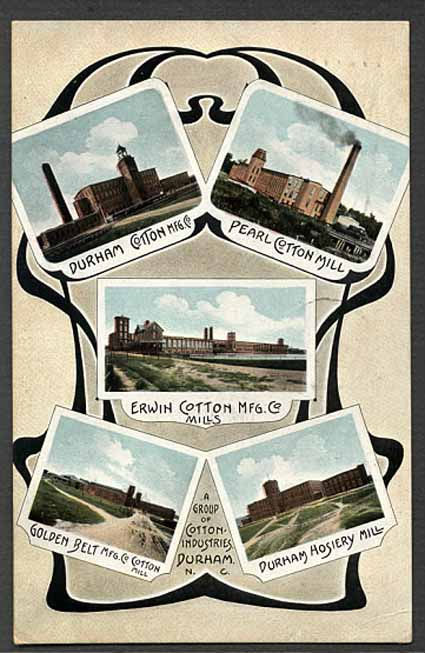
Bull City cotton mills (ca. 1910): by this period, more Durhamites were working in cotton mills than in tobacco factories.
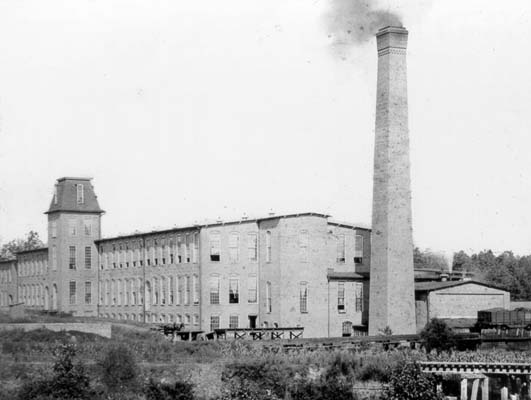
Pearl Cotton Mill (ca. 1900): became Erwin Mill No. 6 in 1932. Mill has been converted into an apartment building on Trinity Avenue, near North Duke Street.
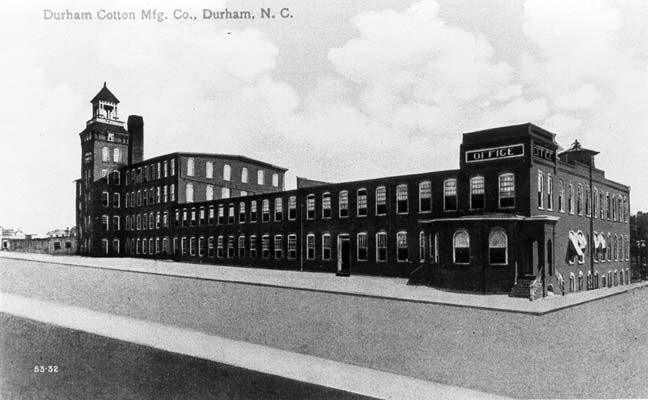
Durham Cotton Manufacturing Company at East Main & Angier (1910)
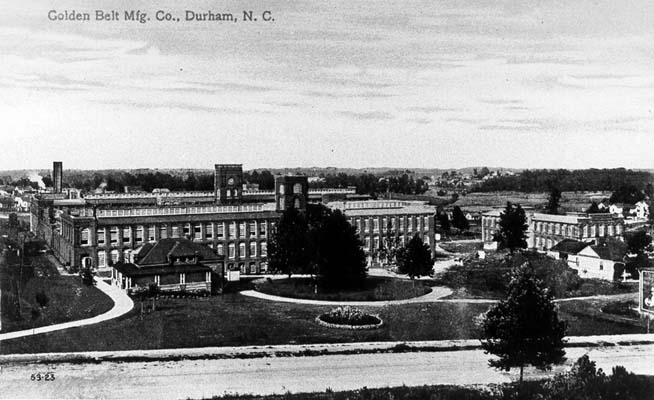
Golden Belt Manufacturing Company (ca. 1910): East Main Street factory manufactured cloth bags to sell tobacco, flour, cornmeal, salt, etc.
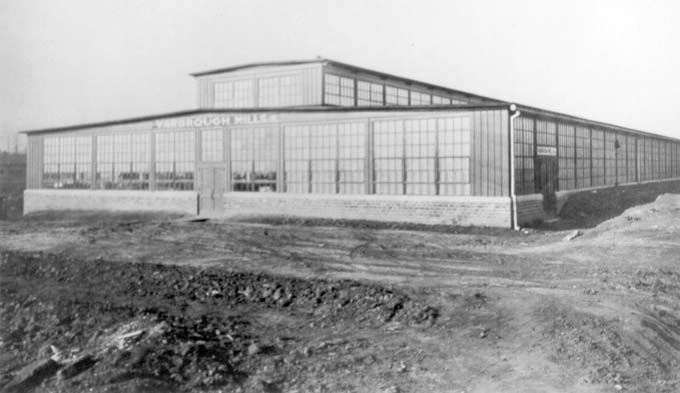
Yarbrough Mills (ca. 1925): Holloway Street, near Calvin.
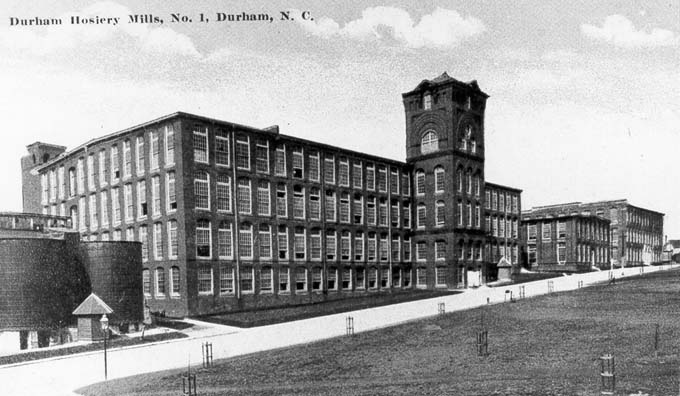
Durham Hosiery Mills in Edgemont, East Durham: Once the world's largest hosiery mill complex and the nation's largest producer of silk stockings. It eventually became the only mill in the country staffed entirely by African-American employees. Today the main mill building provides affordable housing for seniors and is on the National Register of Historic Places. (Photo ca. 1910)
| The history of Smoky Hollow goes back to the 1830s´ notorious Prattsburg saloon, which stood just about at the present corner of Lyon Street and Angier Avenue. As Durham developed later, the bottomland along present Alston Avenue became the town´s red-light district. When tycoon Julian Carr proposed building the Durham Hosiery Mill there in 1900, the Durham Daily Sun rejoiced: "In place of this dark hole of iniquity and infamy, there will be a busy, bustling manufacturing community." A village, which Carr dubbed "Edgemont," grew up to serve several textile mills. With changing tastes and fashions in the 1920s, however, the East Durham textile business began unraveling. By 1940, only one mill remained in operation. Neighborhood businesses shut down; mill housing was sold to rental investors; poverty settled in and crime went up. (source: Herald-Sun) |
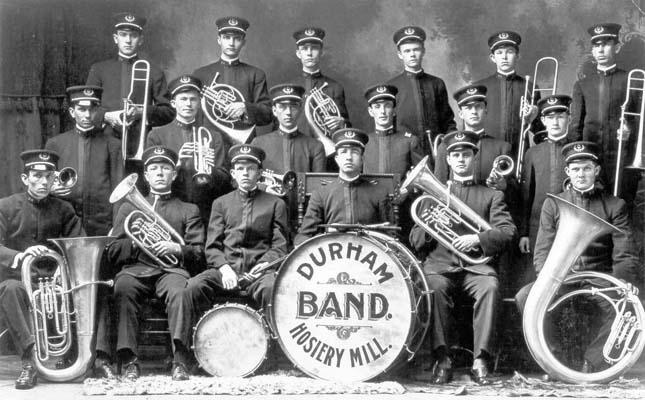
Durham Hosiery Mill (ca. 1910): Company's brass band.
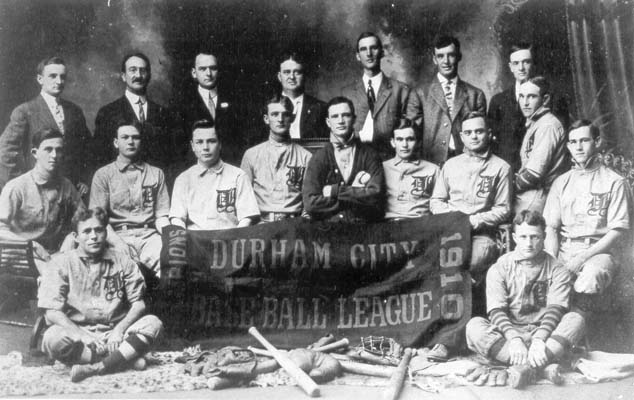
Durham Hosiery Mill Baseball Team (ca. 1910): City Baseball League Champions.
Photographs courtesy of the Durham County Library's North Carolina Collection
